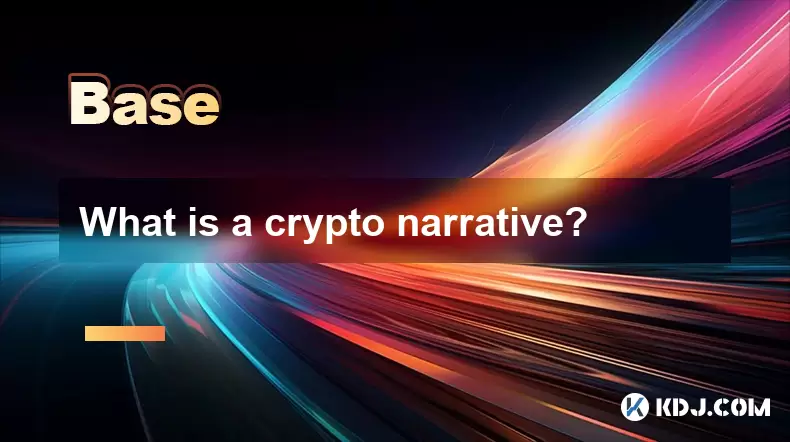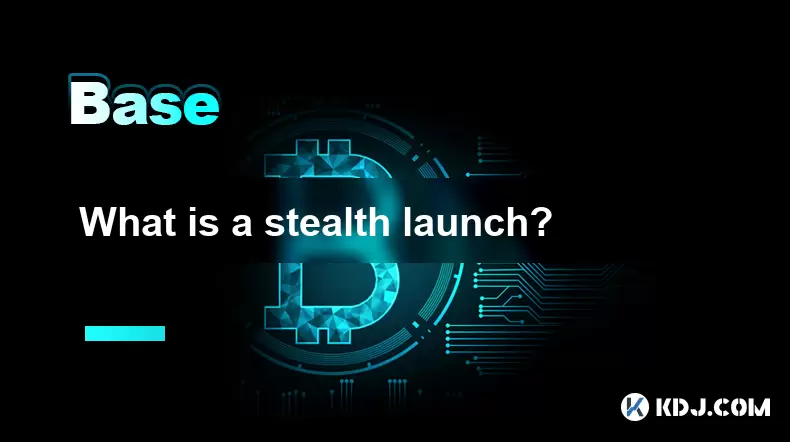-
 Bitcoin
Bitcoin $107,810.8710
-1.45% -
 Ethereum
Ethereum $2,531.4386
-1.75% -
 Tether USDt
Tether USDt $1.0000
-0.03% -
 XRP
XRP $2.2542
-0.99% -
 BNB
BNB $659.1350
-0.50% -
 Solana
Solana $148.5456
-2.40% -
 USDC
USDC $0.9999
-0.02% -
 TRON
TRON $0.2868
-0.44% -
 Dogecoin
Dogecoin $0.1666
-3.65% -
 Cardano
Cardano $0.5751
-2.36% -
 Hyperliquid
Hyperliquid $37.6845
-5.51% -
 Bitcoin Cash
Bitcoin Cash $494.9448
-0.65% -
 Sui
Sui $2.8396
-3.31% -
 Chainlink
Chainlink $13.2423
-2.59% -
 UNUS SED LEO
UNUS SED LEO $9.0482
0.02% -
 Stellar
Stellar $0.2467
-2.44% -
 Avalanche
Avalanche $17.8165
-3.63% -
 Shiba Inu
Shiba Inu $0.0...01158
-2.41% -
 Toncoin
Toncoin $2.7397
-3.42% -
 Hedera
Hedera $0.1560
-2.73% -
 Litecoin
Litecoin $85.8559
-2.34% -
 Monero
Monero $315.3710
-2.30% -
 Dai
Dai $1.0001
0.00% -
 Polkadot
Polkadot $3.3443
-2.03% -
 Ethena USDe
Ethena USDe $1.0001
0.01% -
 Bitget Token
Bitget Token $4.2888
-3.73% -
 Uniswap
Uniswap $7.3388
-1.57% -
 Aave
Aave $278.2986
-3.05% -
 Pepe
Pepe $0.0...09807
-3.67% -
 Pi
Pi $0.4563
-2.39%
What are dynamic NFTs (dNFTs)?
Dynamic NFTs (dNFTs) evolve based on real-world data, offering interactive, ever-changing digital assets driven by smart contracts and oracles.
Jul 08, 2025 at 05:21 am

What Exactly Are Dynamic NFTs (dNFTs)?
Dynamic NFTs, or dNFTs, represent a new evolution in the world of non-fungible tokens. Unlike traditional NFTs, which are static and unchanging once minted on the blockchain, dynamic NFTs can change their properties based on external data inputs. This means that the metadata, image, or attributes associated with a dNFT can evolve over time depending on real-world events, user interactions, or other triggers.
The concept behind dNFTs is built upon smart contracts that allow for conditional logic to be applied to the NFT’s characteristics. For instance, a dNFT representing a digital pet could gain strength or change appearance as its owner completes certain tasks or achieves milestones. The ability to update content without re-minting opens up a wide range of possibilities for creators, developers, and collectors alike.
How Do Dynamic NFTs Work?
Dynamic NFTs rely heavily on smart contracts and oracles to function effectively. Smart contracts are self-executing agreements that automatically perform actions when certain conditions are met. Oracles, on the other hand, serve as bridges between the blockchain and the outside world by providing real-time data from off-chain sources.
Here's how a typical dynamic NFT operates:
- A dNFT is created with predefined rules encoded into a smart contract.
- External data—such as weather information, sports scores, or game achievements—is fed into the blockchain via an oracle.
- When specific conditions are met, the smart contract triggers changes to the NFT’s metadata or visual elements.
- These updates reflect in the NFT’s display without requiring any manual intervention from the owner or creator.
This mechanism allows for real-time interactivity and adaptability, making dNFTs more versatile than their static counterparts.
Use Cases for Dynamic NFTs
Dynamic NFTs offer a variety of applications across different industries. One prominent use case is in gaming, where players can own characters or items that evolve based on performance or achievements. For example, a weapon in a game might become stronger or visually transform after being used in battles.
Another promising area is sports and entertainment. Imagine owning a collectible card of a football player whose stats and appearance update automatically after every match. Fans can engage more deeply with athletes and teams through ever-evolving digital memorabilia.
In the realm of digital art, artists can create pieces that respond to environmental factors like time of day or location. A sunrise painting could gradually shift colors based on the actual sunrise times at the viewer’s current location.
Additionally, dNFTs are gaining traction in education and certification. Certificates or badges issued as dNFTs can automatically update when a learner completes additional courses or meets new requirements, ensuring credentials remain current and verifiable.
Technical Implementation of Dynamic NFTs
Creating a dynamic NFT involves several key steps, starting with the choice of blockchain platform. Ethereum supports dynamic NFTs through its ERC-721 and ERC-1155 standards, but other blockchains like Polygon or Binance Smart Chain may also be suitable depending on project needs.
To implement a dNFT:
- Design the base asset, whether it's an image, 3D model, or audio file.
- Write or integrate a smart contract capable of modifying the NFT’s metadata.
- Connect the smart contract to an oracle service that provides reliable off-chain data.
- Define the conditions under which the NFT should change—for example, if a specific date passes or a certain event occurs.
- Deploy the contract and mint the dNFT using a compatible wallet and marketplace.
One critical consideration is ensuring the reliability of data sources feeding into the NFT. If the oracle provides incorrect or manipulated data, the behavior of the dNFT could become unpredictable or undesirable.
Challenges and Considerations with Dynamic NFTs
While dynamic NFTs offer exciting capabilities, they also come with unique challenges. One major concern is data integrity and trust. Since dNFTs depend on external data inputs, ensuring these sources are secure and tamper-proof is essential. Using decentralized oracle networks can help mitigate this risk.
Another challenge lies in storage and scalability. Updating NFT metadata frequently can increase storage demands and potentially slow down network performance. Developers must optimize their code and data handling strategies to maintain efficiency.
There are also legal and copyright implications to consider. Changes to NFT content could affect ownership rights or licensing agreements. Creators should clearly define terms of use and ensure compliance with relevant laws before launching dynamic assets.
Lastly, user experience plays a crucial role. Collectors and users need intuitive tools to understand and interact with evolving NFTs. Marketplaces and wallets must support dynamic features to provide seamless experiences.
Frequently Asked Questions
Q: Can dynamic NFTs be sold or traded like regular NFTs?
Yes, dynamic NFTs can be bought, sold, or traded on compatible marketplaces just like standard NFTs. However, buyers should be aware of the dynamic nature of the asset and how its properties may change over time.
Q: Are all NFT platforms compatible with dynamic NFTs?
No, not all platforms currently support dynamic NFTs. It depends on whether the marketplace has integrated smart contract functionality and oracle services necessary for dNFT operations.
Q: How do I verify the authenticity of a dynamic NFT’s data source?
Verifying authenticity typically involves checking the oracle provider and reviewing the smart contract code. Some projects publish audits or documentation detailing how data is sourced and secured.
Q: Is it possible to revert changes made to a dynamic NFT?
It depends on how the smart contract is designed. Some contracts may include mechanisms to roll back changes, while others permanently alter the NFT based on triggered events.
Disclaimer:info@kdj.com
The information provided is not trading advice. kdj.com does not assume any responsibility for any investments made based on the information provided in this article. Cryptocurrencies are highly volatile and it is highly recommended that you invest with caution after thorough research!
If you believe that the content used on this website infringes your copyright, please contact us immediately (info@kdj.com) and we will delete it promptly.
- Bitcoin's Bullish Volatility: Traders Bet on a Q3 Surge
- 2025-07-08 13:10:12
- Meme Coins 2025: Presale Surge and ETF Hopes?
- 2025-07-08 12:30:11
- Gate.io, Pump.fun, and the Mysterious Token Sale: What's the Deal?
- 2025-07-08 12:30:11
- Bitcoin Price Decline: Navigating Support Levels Amid Market Uncertainty
- 2025-07-08 13:15:12
- Pi Coin Price Prediction Today: Is a Breakout Imminent?
- 2025-07-08 12:50:11
- XRP, Breakout, and Altcoins: Navigating the Crypto Rollercoaster
- 2025-07-08 12:50:11
Related knowledge

What is a user-generated content (UGC) NFT platform?
Jul 04,2025 at 01:49pm
Understanding the Concept of a UGC NFT PlatformA user-generated content (UGC) NFT platform is a digital marketplace or ecosystem where users can create, mint, and trade non-fungible tokens (NFTs) that represent ownership of original digital content they produce. Unlike traditional NFT platforms where creators often include professional artists or develo...

What is composability in DeFi?
Jul 06,2025 at 04:07pm
Understanding the Concept of Composability in DeFiComposability in DeFi refers to the ability of decentralized finance protocols and smart contracts to interact seamlessly with one another, much like building blocks that can be combined in various ways to create new financial products and services. This concept is a core innovation within the DeFi ecosy...

What is a "crypto primitive"?
Jul 05,2025 at 10:14pm
Defining the Concept of a Crypto PrimitiveIn the context of blockchain and cryptocurrency, a crypto primitive refers to a fundamental building block or foundational element used in constructing decentralized systems and cryptographic protocols. These primitives are essential for enabling secure transactions, consensus mechanisms, and smart contract exec...

What is a crypto narrative?
Jul 07,2025 at 10:56pm
Defining the Concept of a Crypto NarrativeA crypto narrative refers to the overarching story or theme that drives interest, investment, and development within a particular segment of the cryptocurrency market. Unlike traditional financial assets, cryptocurrencies often gain momentum not solely based on technical merits but through compelling narratives ...

What is a stealth launch?
Jul 08,2025 at 06:42am
What Exactly Defines a Stealth Launch in Cryptocurrency?A stealth launch refers to the practice of launching a cryptocurrency project without prior public announcement or marketing efforts. This method is often used by development teams who prefer to keep their project under wraps until it reaches a certain level of maturity, adoption, or liquidity. Unl...

What is a fair launch?
Jul 05,2025 at 07:31pm
Understanding the Concept of a Fair LaunchA fair launch refers to the release of a cryptocurrency or blockchain project in a manner that ensures equal opportunity for all participants. Unlike traditional token launches, which may involve private sales, venture capital funding, or pre-mining, a fair launch emphasizes transparency and decentralization. In...

What is a user-generated content (UGC) NFT platform?
Jul 04,2025 at 01:49pm
Understanding the Concept of a UGC NFT PlatformA user-generated content (UGC) NFT platform is a digital marketplace or ecosystem where users can create, mint, and trade non-fungible tokens (NFTs) that represent ownership of original digital content they produce. Unlike traditional NFT platforms where creators often include professional artists or develo...

What is composability in DeFi?
Jul 06,2025 at 04:07pm
Understanding the Concept of Composability in DeFiComposability in DeFi refers to the ability of decentralized finance protocols and smart contracts to interact seamlessly with one another, much like building blocks that can be combined in various ways to create new financial products and services. This concept is a core innovation within the DeFi ecosy...

What is a "crypto primitive"?
Jul 05,2025 at 10:14pm
Defining the Concept of a Crypto PrimitiveIn the context of blockchain and cryptocurrency, a crypto primitive refers to a fundamental building block or foundational element used in constructing decentralized systems and cryptographic protocols. These primitives are essential for enabling secure transactions, consensus mechanisms, and smart contract exec...

What is a crypto narrative?
Jul 07,2025 at 10:56pm
Defining the Concept of a Crypto NarrativeA crypto narrative refers to the overarching story or theme that drives interest, investment, and development within a particular segment of the cryptocurrency market. Unlike traditional financial assets, cryptocurrencies often gain momentum not solely based on technical merits but through compelling narratives ...

What is a stealth launch?
Jul 08,2025 at 06:42am
What Exactly Defines a Stealth Launch in Cryptocurrency?A stealth launch refers to the practice of launching a cryptocurrency project without prior public announcement or marketing efforts. This method is often used by development teams who prefer to keep their project under wraps until it reaches a certain level of maturity, adoption, or liquidity. Unl...

What is a fair launch?
Jul 05,2025 at 07:31pm
Understanding the Concept of a Fair LaunchA fair launch refers to the release of a cryptocurrency or blockchain project in a manner that ensures equal opportunity for all participants. Unlike traditional token launches, which may involve private sales, venture capital funding, or pre-mining, a fair launch emphasizes transparency and decentralization. In...
See all articles

























































































